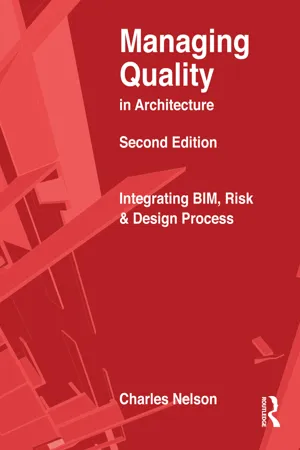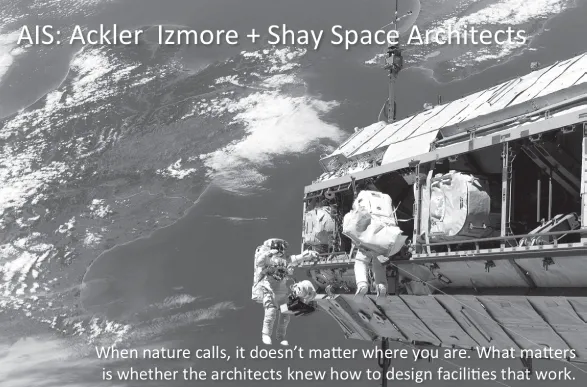
Managing Quality in Architecture
Integrating BIM, Risk and Design Process
- 362 pages
- English
- ePUB (mobile friendly)
- Available on iOS & Android
Managing Quality in Architecture
Integrating BIM, Risk and Design Process
About This Book
Completely revised throughout for this second edition, Managing Quality in Architecture addresses the new ISO 9001 standards after the significant 2015 revision. ISO 9001 is the global standard for quality, and firms certified under the 2008 edition have three years to upgrade their quality systems to the new Standard. This book helps architects, engineers and other designers working in the built environment to develop appropriate quality systems that meet the requirements of the international Standard.
Importantly, the 2015 Standard integrates risk management with quality, something that earlier versions did not. Risk is an extremely important factor in professional design practice, and this important element is fully explored in the new edition. Similarly, the role of BIM in quality management is addressed as an integral part of practice.
International contributions from the USA and Australia provide expertise in each topic, and case studies from the USA, Japan, Australia, New Zealand and the United Nations Office of Project Services provide easy-to-follow illustrations of the important areas to understand. The focus is completely practical, rather than theoretical, affording readers a concise picture of how the issues of excellence and quality performance flow across every aspect of design practice.
Frequently asked questions
Information
1 Surviving & Thriving in a Swiftly Evolving Professional Environment
AIS Space Architects update:

1.1 Forces driving change in the design professions
Times of rapid change are rife with opportunities for architects.AIA, The Client Experience – 2002
How swift is the evolution?
Has the pace of change accelerated way beyond your comfort zone? Are the rules that guided your decisions in the past no longer relevant? If so, you are just like everyone else who’s paying attention…. The elements of change that are driving these momentous shifts are based on the fundamental dimensions of the universe itself: time, space and mass…. The fact is, something enormous is happening all around you, enough to make you feel as if you’re losing your balance and seeing double.
We are in the midst of a tremendous social and economic transformation, as sweeping as the Industrial Revolution was some 150 to 200 years ago. The current process of change has been called many things: the global economy, the information revolution, the age of complexity. Whatever we call it, this break with the past has shaken the foundations of our economic and social lives, laid during the Industrial Revolution, and it has rendered vulnerable the various structures so carefully built upon those foundations, including the structures of the professions and universities.
One of the major blind spots among architecture and engineering professionals is a real failure to grasp the speed at which the world is changing.
We now live in the Shift Age, a time of transformation that will be regarded by future historians as one of the most significant periods in human history.
The globalization endg...
Table of contents
- Cover
- Half Title
- Title Page
- Copyright Page
- Table of Contents
- Dedication
- Acknowledgements
- Preface
- Foreword
- Introduction
- Key resources
- 1 Surviving & Thriving in a Swiftly Evolving Professional Environment
- 2 Why Quality?
- 3 Lessons from the Leaders: Case Studies in Quality
- 4 Creating Efficient, Effective Quality Systems
- 5 Harnessing the Power of ISO 9001
- 6 Vision, Leadership, Planning & Brand
- 7 People
- 8 Integrating BIM, Risk & Design Process
- 9 Business, Connectivity & Marketing
- 10 Project Quality: Techniques that Deliver Results
- 11 Pushing the Envelope: The Future of Practice
- 12 Appendices
- Index